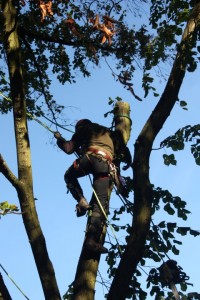 Acme work on protected trees with Tree Preservation Orders (TPO) and those within protected woodlands and conservation areas. We have a full understanding of the legal requirements to be able to work on these trees and have the appropriate procedures in place.
Acme work on protected trees with Tree Preservation Orders (TPO) and those within protected woodlands and conservation areas. We have a full understanding of the legal requirements to be able to work on these trees and have the appropriate procedures in place.
NB: Work on protected trees should only be carried out by qualified arborists, usually found on the Local Authorities Approved Contractors List or the Arboricultural Associations Approved Contractors list to ensure the work must be carried out to British Standards BS3998:2010 Recommendation for Tree Work.
IMPORTANT: Failure to do this could result in heavy fines!
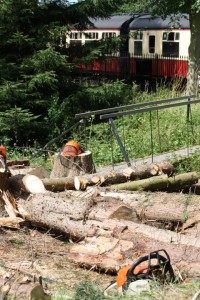 Planning Applications/Liaising with Local Authorities
Planning Applications/Liaising with Local Authorities
If your tree falls within a protected category we will be happy to submit the relevant planning application forms to the Local Authority and liaise with the Tree Officers as part of our service – at no charge if our tree work quotation is accepted.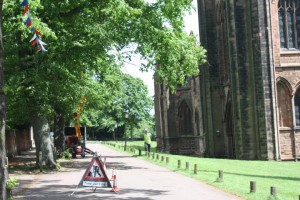
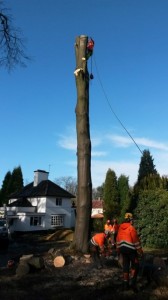
Deadwood Removal
The removal of deadwood is required for the majority of trees to prevent falling branches. Even protected trees (TPO) may need deadwood removed which is exempt from needing permission from the Local Authority however you must ensure that you use an Approved Contractor, usually listed on the Local Authorities Approved Contractors list, and the work must be carried out to British Standards BS3998: 2010 Recommendations for Tree Work.
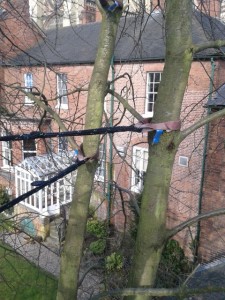 Cable Bracing
Cable Bracing
A cable bracing system can be installed to ensure safety and longevity. Weak branches are given support by the use of cables. Where there are suspect joints of larger limbs to the main stem of the tree or V-shaped forks, a cable brace is likely the best solution.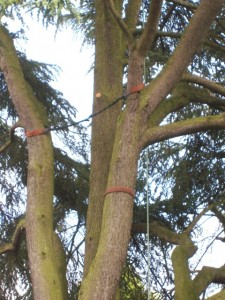
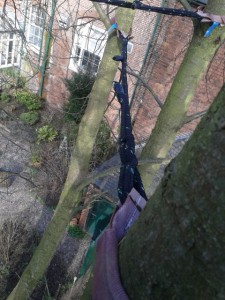

Mature/Veteran Trees
Veteran trees are incredibly valuable and provide a range of rich but scarce habitats which support many rare and endangered species and are an irreplaceable part of England’s landscape and biological heritage. Therefore owners have a particular responsibility to ensure these trees, and the fragile habitats they support, are managed appropriately. It is important that veteran trees have a proper management strategy in place – wrong management may damage or even kill these trees.
An arborist can sometimes be the first person to identify and, if necessary, tomanage and work on these trees so it is essential to get the right advice and that work is carried out in accordance with British Standards and appropriate for veteran trees.
Old trees are not necessarily more prone to failure than younger trees. While defects may be increasingly present with age, many hollow old trees with rot and deadwood have survived gales and storms, whereas younger trees without any apparent defects, have lost major branches, snapped or blown over. This is, in part, due to the tendency for older trees to have thicker, shorter trunks, with low broad crowns, or crowns with reduced wind resistance or branch weight. These and other features represent survival strategies that enable trees to become veterans and contribute to their longevity.
A tree may break irrespective of age and hazards need to be addressed in all trees where mechanical failure may result in harm. By identifying those hazards which pose unacceptable levels of risk and managing that risk the conservation of the cultural, landscape and habitat values of veteran trees does not have to be at the expense of safety.
If tree surgery is required on a veteran tree it should be the minimum work necessary to retain maximum habitat value while addressing the requirement to maintain adequate safety. Some options maybe;
- Restoration. Crown reduction of lapsed pollards or trees liable to failure or collapse. This may involve reduction of the overall crown height and spread in stages over a period of time with a recovery between each stage. This includes the term re-pollarding.
- End weight reduction. Selective reduction to end-loaded heavy limbs at risk of breakage.
- Crown thinning. Undertaken selectively to reduce wind resistance and end loading.
- Pole thinning. Involving the removal of selected pollard stems, a gradual process over a specified time.
- Truncation. Severe reduction of major stems in extreme cases of structural instability.
- Pruning cuts. Should be undertaken where
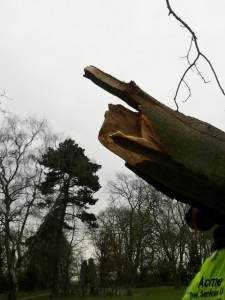 appropriate with use of natural fracture techniques or coronet cuts.
appropriate with use of natural fracture techniques or coronet cuts. - Deadwood cutting. Where deadwood is considered hazardous it can be reduced in weight by nature fracture techniques or coronet cuts. Entire removal is seldom essential. Usually it is possible to leave a stub with a fractured end which is still of value to wildlife.








